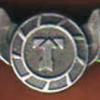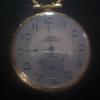Leaderboard
Popular Content
Showing content with the highest reputation on 06/22/16 in all areas
-
You definitely have a problem, a "waterproof" watch should never suffer fom this. You did the correct thing by opening it and drying it out. I would recommend replacing all the seal, or at least removing the and re-lubricating them with silicon. Make sure that the watch is bone dry before closing it, and do this when air humidity is low.2 points
-
1 point
-
1 point
-
jdrichard, that was great as I was watching I did wonder at first why you didn't show oiling the top pivot of the staff. I found out in video two. As you soon found out a little oil in the right place can work wonders. I would get hold of a decent pocket watch movement holder. Just be careful if you leave the hands on they bend so easy or even break. It wouldn't have hurt to have taken the dial off that way you could have made sure all parts had oil. Not criticizing at all just a couple of useful tips. Very well done.1 point
-
It's better to have an extra movement. You never know what other parts may ping off into oblivion.1 point
-
Cousins has the balance complete for about £15. I bought one a while back, but the watch is currently in pieces on my bench as it was running really badly. My balance has too much end shake, the barrel arbour holes in the plates need rebushing as does the next wheel in the train. This means the whole thing does not transmit power evenly. I didn't really look hard at it first time around as I was focused on whether I could fix the chrono runner. I have concluded that my next step is to bring one of my part movements in to play and start with the plates from that. Your timegrapher trace is odd with the four lines. I would be inclined to start from first principles and check the whole drive train adding one piece at a time. If you've already built it, this will mean stripping the chrono section off, but this is the only way! S1 point
-
Very kind offer I have accepted Tudor405's offer but will contact you if I get stuck.1 point
-
Like others on here I don't restrict myself to just one set of screw drivers. I have one set ground to a thinner profile, and another set ground to a slightly fatter profile. I also have numerous screw drivers ground to extra thin and extra fat. As a rule I find that Swiss screw slots are thinner than Japanese, Quartz movements tend to have a few have extra fat slots, very old pocket watches seem to have extra thin slots. This sounds like an expensive investment in screw drivers but I have probably spent less on my multiple sets than many others have on just one as I have picked them up second hand and in job lots from all over the place. They are good quality, vintage, French or Swiss. They don't necessarily have the silkiest smooth ball bearing tops to them but they are perfectly functional. If you generally work on the same type of movements (pocket watch, or Japanese, or Russian for instance) then one set of screw drivers tailored to that specific family of watch movements is all you need. As for throwing away old blades it does seem a bit of a shame. Generally speaking all that is needed to bring a chipped blade back into trim is 5 minutes on a stone (or decent quality wet & dry paper on a sheet of glass, or your diamond stones). If you find that you are regularly suffering from chipped blades then it might well be worth exploring the possibility of adjusting the temper of the blades. If you get it right you not only get more resiliant blades which are less likely to scratch movement plates, but you also gain an understanding of heat treatments for steel on a macro or even micro scale. Useful stuff.1 point
-
The balance wheel has been played about with. The timing screws do not match, one has been filed off, another has been fitted with a timing washer. The pin in the stud is a monster and should be replaced. I'm not surprised the watch isn't keeping good time. You need a new balance complete. Have you poised the balance?1 point
-
Hi I have the parts you need plus -a complete movement less setting lever spring-and various other parts including a good balance I can stick them in the post if it will help1 point
-
This one you really should have it has loads of info and pictures of movements. Helps a lot for you to identify the old type manual movements. There was always a copy of this in my workshop. http://www.ebay.co.uk/itm/Watchmakers-swiss-federation-calibre-identification-catalogue-/252429385621?hash=item3ac5f6bf95:g:GGkAAOSwx-9W0sS~1 point
-
Hi Jesmond If you want to learn about watches, taking them apart and putting them back together again... start with a watch that's already working. No point wasting effort on something that may baffle an expert. There are quite a lot of tips and tricks on the internet and Marks videos will give you the confidence to get going. Russian watches are robust and can be had cheaply off the net. You'd want something like ths.... http://www.ebay.com/sch/i.html?_from=R40&_trksid=p2050601.m570.l1313.TR0.TRC0.H0.Xlot+of+russian+movements.TRS0&_nkw=lot+of+russian+movements&_sacat=0 Seller says that the balance is OK and the watch will run if shaken. This is a good sign as it probably means that all it needs is a good clean and oiling. USD 7 for shipping is fair. For these simple watches you will need. 1. A GOOD pair of tweezers.. cheap ones will only frustrate you. I can't stress this strongly enough. 2. Good screwdrivers.. not as critical as tweezers but get some from a watch supply house specially meant for watches. The ones sold in flat plastic cases at general stores is pretty much useless. 3. Lighter fluid to clean parts (ronsonol or zippo works), and a small cup to hold said fluid while cleaning. 4. Pegwood .. this is a special type of wood used to clean watches. You sharpen the tip and use the pointy bit to poke the tiny jewel holes to cean them out. Pegwood is a special wood that won't splinter easily. Don't try to use those cocktail sticks, a splinter in the jewel hole is not good. 5. Rodico. This is a special watchmakers 'plasticine'. Typically green in colour. Faber-castell blutack is the same shade but useless for watches as its too 'oily'. Rodico is a great help for cleaning parts and picking up stuff like cap jewels. 6. Pithwood...another special wood that is used to clean pivots and the tips of your screwdriver/tweezers. Not strictly necessary .. I use Rodico. 7. Oils... you will need a light oil for the jewels (moebius 9010) and something heavier for slower moving wheels (moebius 9020). These oils are expensive so for a beginner you may use some cheaper oils like novastar. Also in the beginning you may find that your 'oiling technique' has not developed fully and you will waste a lot of oil. Finally 8. A good data-plan, help is just a click away on this site! Mechanical watches are good to learn on because they're ...well.., mechanical!. (I assume you have a bit of mechanical apptitude otherwise you wouldn't be bothered to walk down this road). Problem with quartz is that troubleshooting is only viable if you have the electronic equipment and the knowledge to use them. Once you've identified the problem, chances are the part is not available individually and you would need to replace the whole movement anyway. Personally I can get easily understand how any mechanical device works and even if I can't fix it at least I have a good idea of what wet wrong. But anything more complex than a DC motor I'd probably need help! I realize that the comments you have been getting may be a bit discouraging but it's done with the best intent. Hopefully you will find the same gratification in this hobby that most of us have! Looking forward to hear more from you. Anil1 point
-
Jesmond, The trend on the bay is to package together fashion watches with one or two desirables, meaning sellers will get you to buy lower quality watches in the quest of a few that have value. Are yours worth taking apart? I suppose if you want to see how they are made, then yes. But you may find no jewel, quartz, relatively inexpensive movements, that are cheaper to replace then they are to try and fix. I passed on a lot last week that had 17 quartz complete watches, Seiko chronos and the like, and one Omega Seamaster 007. Upon closer examination, the "Omega" had some appearance flaws, (i.e. the case did not match almost every photo that came up on a web search, in addition, seller conveniently failed to even mention this watch in description, intentional deception? perhaps. My suggestion is start with Timex, Bulovas or similar mechanical movements, look for complete watches, (case, bracelet, dial, hands, crystals) and in good overall condition. Running is a plus! I am not trying discourage you from taking on this project, just trying to save you time/effort and money. Quartz movement swaps are fairly easy and should help you develop necessary skills (and confidence) to move into more complex movements. Good luck and welcome to the wonderful world of watches! Let us know how it goes. Dave "A broken watch is correct at least twice a day"1 point








